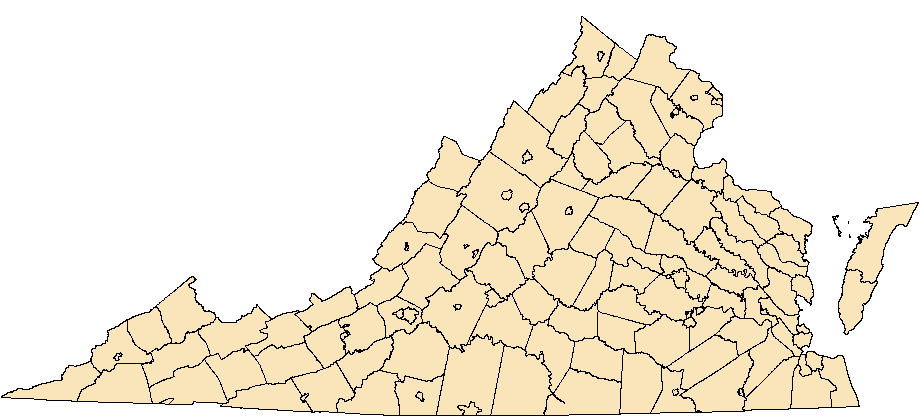Euphyes bimacula (Grote and Robinson, 1867)
Two-spotted Skipper
NatureServe Global Rank: G4
Virginia State Rank: S2
VA DGIF Tier: IV
Federal Legal Status: None
Virginia Legal Status: None
Description: The ventral side of the Two-Spotted Skipper is tan-brown with whitish veins. There is a distinct white line on the hind wing running parallel to the body when at rest which is a defining characteristic of this species. The dorsal side of Two-Spotted Skippers displays a sexual dimorphism. The male has a yellow-orange patch from the base of the wing and along the leading edge toward the outer margins with a black stigma running through it. The margins are brown. The female is mostly brown with yellow-orange spots somewhat bisecting the wing starting near the wrist bracelet spots. These can be variable in size and shape.
Similar species: The Two-Spotted Skipper is similar to other wetland skippers that can be found in the same habitat, especially others of the genus Euphyes. In Virginia, the only similar species have distinctly different markings on the ventral hind wing and lack the distinct (diagnostic) white line of the Two-Spotted Skipper. The dorsal sides of both males and females are very similar to other Euphyes species so the ventral hind wing should be the focal point for differentiation.
North American Range: This species, though widespread, is often rare but can be common in the appropriate locality. It is found in Central Maine down into the mountains of North Carolina and occasionally in the central plains area extending out to Colorado. A separate population that is rarely encountered exists in the coastal plain of North Carolina to Georgia.
VA Observations by Locality: Augusta | Highland | Floyd | Frederick | Grayson | Highland | Suffolk, City of








Flight season and broods: In the Northern states, the season runs from June to July and produces one brood. In the South, two broods are common with a season lasting from April to August.
Habitat and Food Plants: The Two-spotted Skipper prefers open bogs, marshes, swamps, and other damp areas. The host plants of choice for this species are Sedges. The Tussock Sedge (Carex stricta) and the Hairy-fruited Sage (Carex trichocarpa) are the most common. These tend to grow in moist areas like bogs and marshes, where the Two-Spotted Skipper is likely to be found.
Behavior and Ecology: Males are known for perching on marsh grass to scout out females. The caterpillars produced make nests in rolled up leaves and are able to hibernate over winter. This species is classified as a "medium specialist" meaning it is local but its habitat requirements are not strict.
Population trend and potential threats: The population worldwide is strong, but not always on a local basis. Peripheral habitats may be at risk.
Management practices: There are no management practices currently in place for this species. Keeping wetlands open and clear of aggressive invasive species would likely encourage the viability of Two-Spotted Skippers populations.
References: Allen, T. J. 1997. The Butterflies of West Virginia and their Caterpillars. University of Pittsburg Press. 388pp.
Cech, R. and G. Tudor. 2005. Butterflies of the East Coast. Pg. 300. Princeton University Press.
Opler, P. A. and V. Malikul. 1992. Eastern Butterflies. Pg. 300. Oxford University Press.
Pyle, R. M. 1981. Field Guide to North American Butterflies. National Audubon Society.
Virginia Department of Conservation and Recreation, Natural Heritage Program, 600 E. Main St., 24th Floor, Richmond, VA 23219
This atlas was compiled
by the VA Natural Heritage Program with funds provided by the VA Dept. of Game and Inland Fisheries through a state wildlife grant
from U.S. Fish and Wildlife Service
Questions/Comments? Check the contacts page |
Internet Privacy Policy Statement
Last Modified: Friday, 26 February 2021, 03:21:56 PM